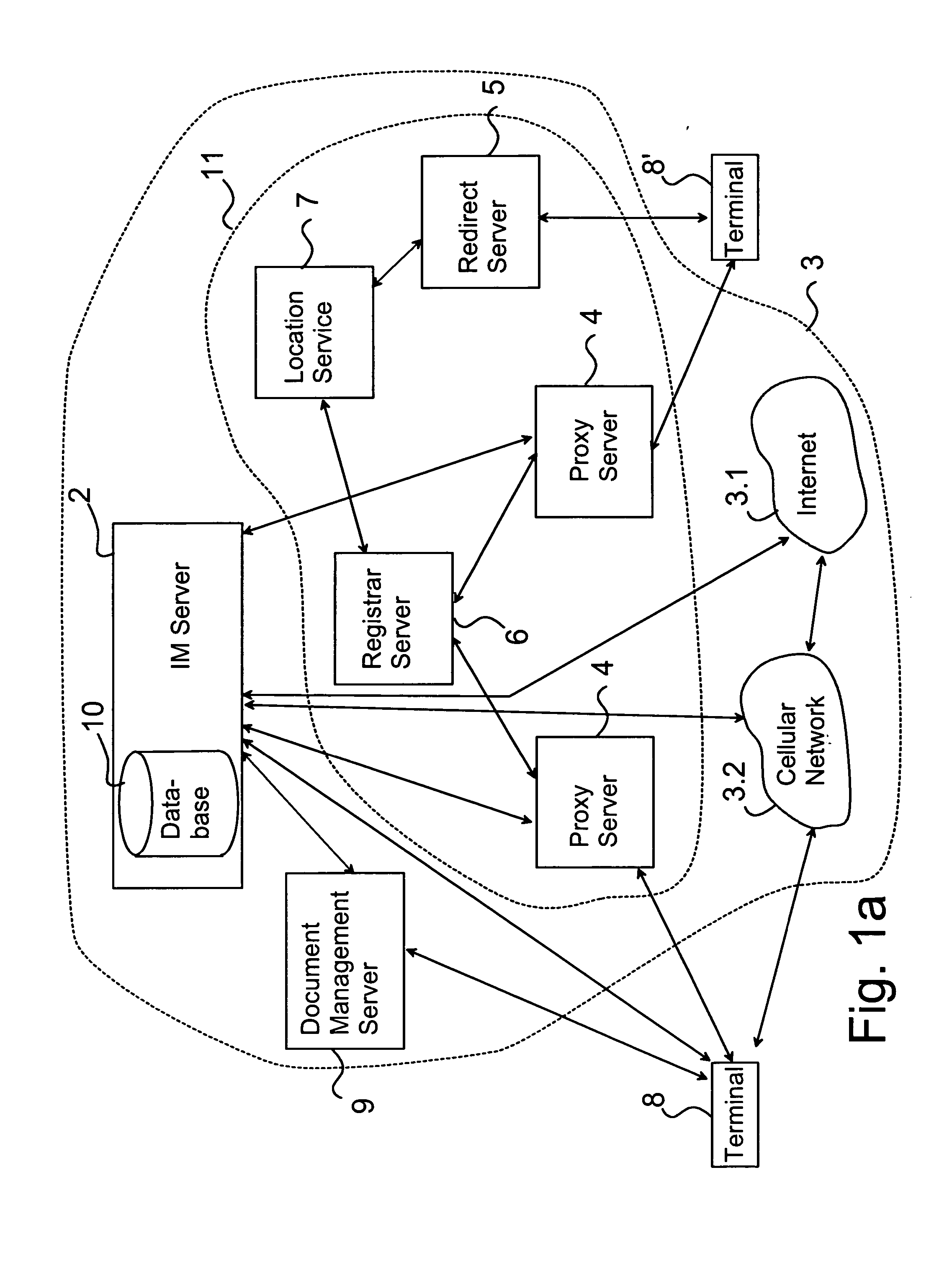Method and apparatuses for retrieving messages
a message retrieval and message technology, applied in the field of communication services, can solve the problem of not being able to download the whole conversation, and achieve the effect of reducing the traffic load of the communication network, facilitating user search, and reducing the power consumption of the receiving devi
- Summary
- Abstract
- Description
- Claims
- Application Information
AI Technical Summary
Benefits of technology
Problems solved by technology
Method used
Image
Examples
example 1
[0151] In the following there is a more detailed description of the situation of the signaling diagram of FIG. 2 in which the terminal 8, 8′ uses XCAP to retrieve the Conversation history metadata document and then retrieve the selected conversation.
[0152] To retrieve the list of stored conversations, the terminal 8, 8′ sends a message (204) to the DMS 9. The message contains indication on the name of the method i.e. Conversation history metadata retrieval. The DMS 9 responds (205) to the request by sending a response with the document containing the list of conversations. The list contains a unique identifier of each conversation (i.e. the Conversation_ID) and other detailed information about the conversation needed for selective or partial retrieval as described earlier in this application and in later examples.
[0153] The terminal 8, 8′ indicates (206) the list of the stored conversations by the user interface 8.3 of the terminal, e.g. displays the list on the display 8.33. The ...
example 2
[0158] For example, the user of the first terminal 8 finds out that conversation with Conversation-ID 84381763998sdasdh09@bob.operator.com is interesting but it is very long, 200 messages. The user wants to retrieve the first 20 messages to find out the discussion topic. The terminal 8 (the SIP User Agent) forms identifiers (SIP URIs) for messages 1 to 20 of the conversation. The Conversation_Content_IDs are as following:
[0159] 84381763998sdasdh09.0001@bob.operator.com
[0160] 84381763998sdasdh09.0002@bob.operator.com
[0161] 84381763998sdasdh09.0020@bob.operator.com
[0162] Another possible way to express the list of conversation content IDs is as follows:
[0163] 84381763998sdasdh09@bob.operator.com; Content-ID=“0001”
[0164] 84381763998sdasdh09@bob.operator.com; Content-ID=“0002”
[0165] 84381763998sdasdh09@bob.operator.com; Content-ID=“0020”
[0166] It is obvious that the above described examples are just illustrative, not limiting examples on how to express identifiers of the messages i...
example 3
[0170] In a situation that the user wants to retrieve a lot of messages (e.g., messages 1-100 of the conversation), the SIP INVITE request with SIP-URI list would be unnecessarily large. An alternative way of indicating the message range would be beneficial. The message range could be indicated in the headers of the SIP INVITE request, e.g. as an URI parameter. For example,
[0171] sip:84381763998sdasdh09@bob.operator.com;Conversation_Content_ID_st art=10;Conversation_Content_ID_end=100.
PUM
 Login to View More
Login to View More Abstract
Description
Claims
Application Information
 Login to View More
Login to View More - R&D
- Intellectual Property
- Life Sciences
- Materials
- Tech Scout
- Unparalleled Data Quality
- Higher Quality Content
- 60% Fewer Hallucinations
Browse by: Latest US Patents, China's latest patents, Technical Efficacy Thesaurus, Application Domain, Technology Topic, Popular Technical Reports.
© 2025 PatSnap. All rights reserved.Legal|Privacy policy|Modern Slavery Act Transparency Statement|Sitemap|About US| Contact US: help@patsnap.com



